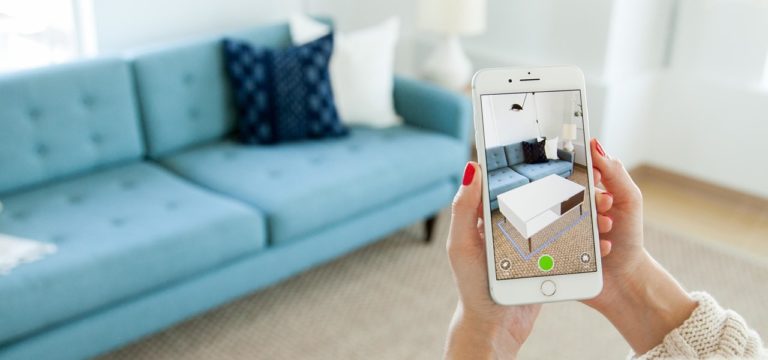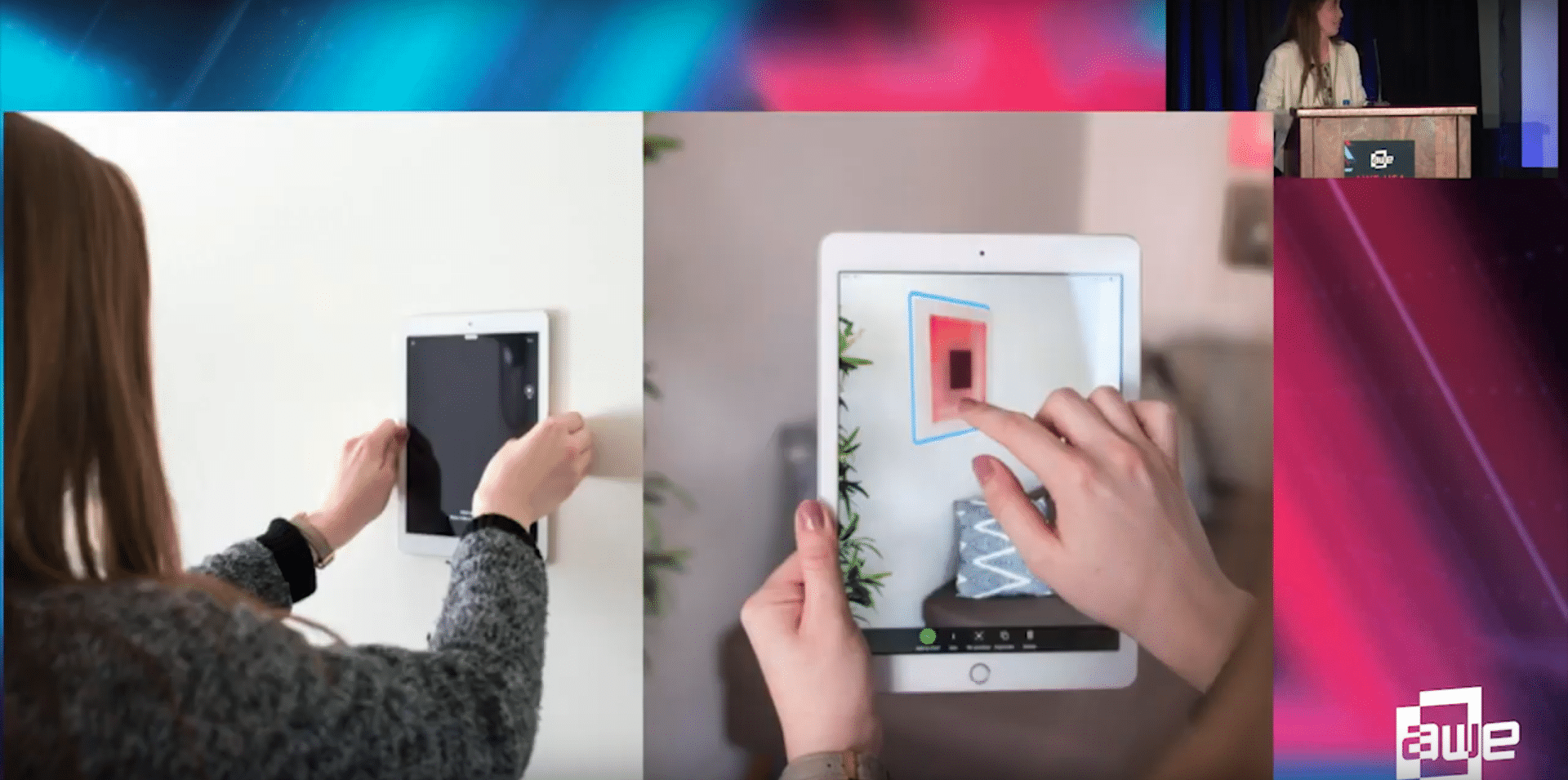
XR Talks is a series that features the best presentations and educational videos from the XR universe. It includes embedded video, as well as narrative analysis and top takeaways. Speakers’ opinions are their own.
One company that’s arguably gotten the most accolades for AR commerce implementation is Houzz. The 11x boost in conversion rates from its View in My Room feature is perhaps the most cited data point from AR proponents, on the stage and on the page. We’re guilty of that too.
But how did it get there? Visual tech lead Sally Huang educated the AWE audience (video below) on the company’s AR origin story and ongoing design principles. In fact, she joined Houzz four years ago to bring visual technologies into the mix, though AR wasn’t the obvious path initially.
This started as a sort of 2D version of View in My Room that involved flat stickers for in-room furniture visualization. Though primitive, Houzz operational scale gave it large-sample demand signals by which to test and iterate features. And all signs pointed to keep moving towards AR.

“The mobile team took product photos, removed the background and used them as stickers,” she said. “They were able to apply this to just about any photo in the entire library… so if you were shopping for anything, there was an opportunity to view it in your room as a 2d sticker.”
With just that 2D sticker, Houzz saw a 3x boost in conversions over non-visualized benchmarks. This was enough to get it thinking about more spatially-advanced integrations. Notably, this was before ARkit so like other AR pioneers at the time, it had to do lots of in-house development.
“It seemed like too much of a technical challenge, but when we saw the success… it became obvious it was something we had to work towards,” said Huang. “If you were able to get such good results with 2D, imagine what it would look like [with] a full 3D integrated experience.”
Fast forward several product cycles and Huang’s team was ready to hit the ground running when ARCore and ARkit finally did come out in 2017. It was able to take all the work it did and integrate these new native libraries for better functionality like tracking, scale and light estimation.
More importantly, all of that previous iteration and integration of View in My Room taught Huang & team an important lesson: AR needs to be in the shopping flow. It discovered through large-scale testing that AR features within users’ existing shopping path outperforms “standalone” AR.
“Part of what we think made our experience so successful was that we really had to answer the question of AR visualization in the shopping flow,” said Huang of the design principle also known as ‘AR as a Feature‘. “So you can basically do the visualization, pop right out and check out.”
The result of all of this was the now-famous 11x figure for AR conversion rates. The tactics that got it there were iterative product cycles, listening to your customers, following the data closely, and not requiring “activation energy” for users to access something new and unproven like AR.
Now, Huang and team are doubling down on these tactics and principles. Just as they’ve been conditioned to create clever hacks out of necessity, they’re now doing the same to reconcile ARkit deficiencies like vertical plane detection. After all, lots of Houzz products go on your wall.

“People buy ceiling products, people buy wall products,” said Huang. “So we basically spent a lot of time really thinking about the simple gestures we can introduce into our features to vastly expand on the amount of functionality and the amount of categories that we can handle.”
The key is making it intuitive for shopping. ARkit and ARCore provide a great foundation. But it’s just that: Some degree of customization is needed for optimal UX in specific product classes, which is a good lesson for any AR-curious retailers. It’s all about making it predictable for users.
“When it came to user experiences, we basically opted for predictability,” said Huang. “You know, at the end of the day, AR itself has some unpredictable behaviors built-in. So wherever you can, as a design philosophy, introduce predictability. We basically follow that as a rule.”
See the full presentation below.
For deeper XR data and intelligence, join ARtillery PRO and subscribe to the free AR Insider Weekly newsletter.
Disclosure: AR Insider has no financial stake in the companies mentioned in this post, nor received payment for its production. Disclosure and ethics policy can be seen here.
Header image credit: AWE, YouTube
